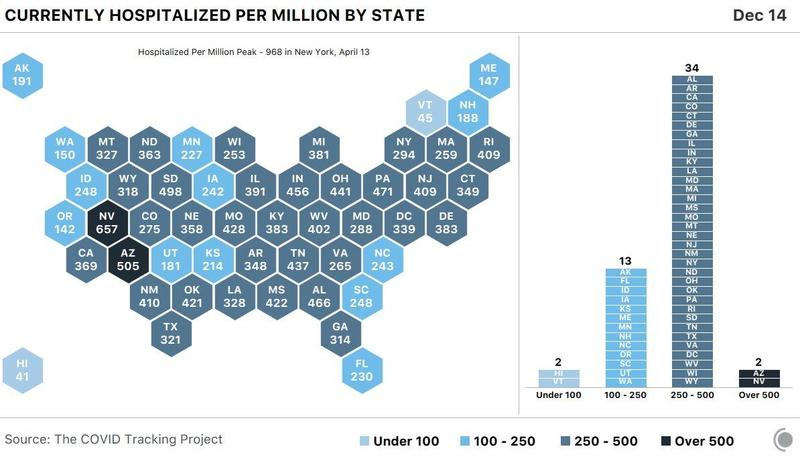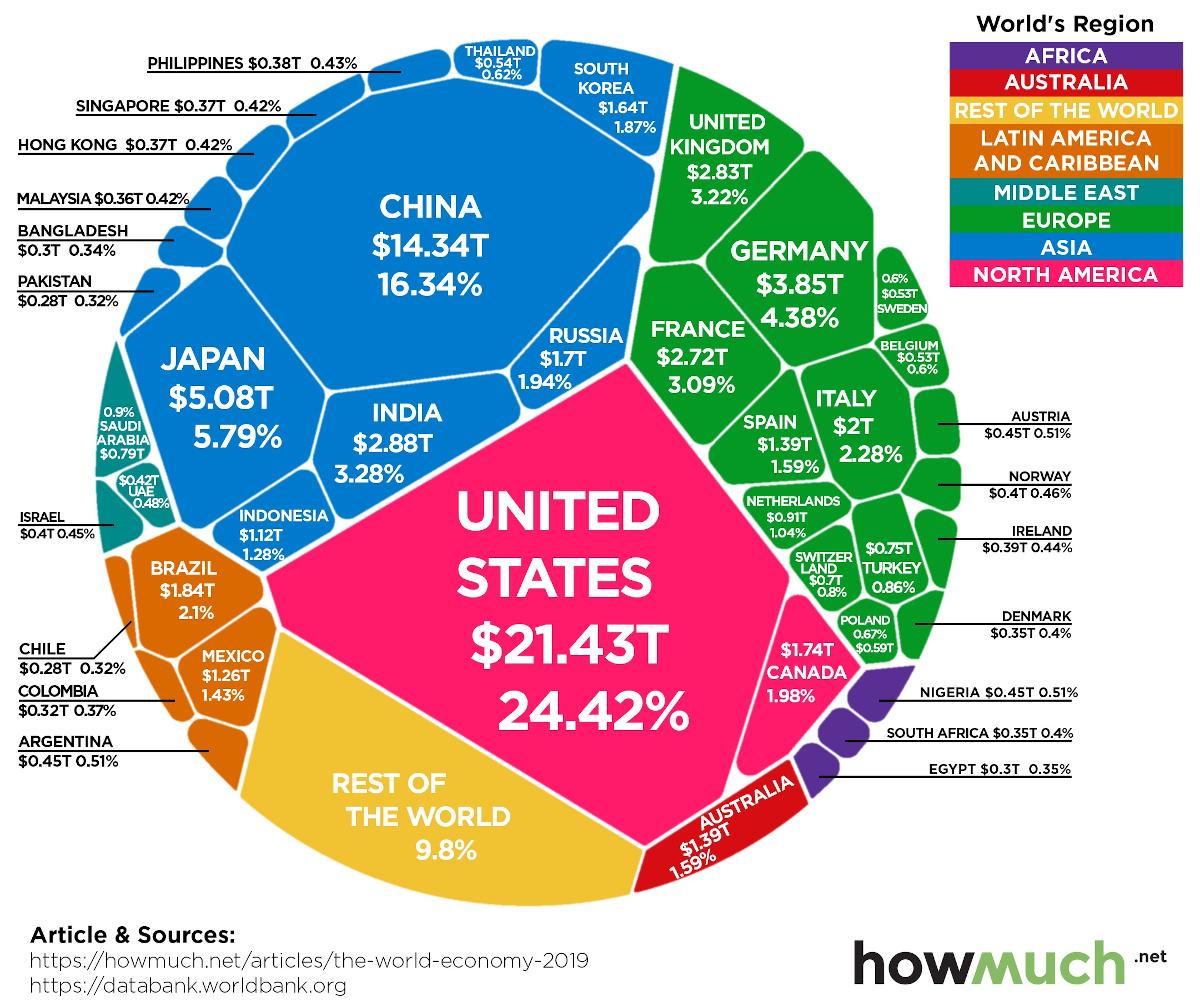An early part of the core lecture entitled "Why Is Macro So Hard?" is that the government actually suppresses the collection of data they don't want anyone to know about (like, say, student loan delinquency rates by major or political affiliation).
Governments also play games with the numbers. It's being reported that the state of Florida (which has been accused of playing games with COVID numbers for months) changed its reporting right before the election and changed back after the election. The result was systematically lower death numbers around election day.
Do note that there is an innocent problem here, but it appears the state used that to hide its policy.
The innocent problem is that in most places there are so many deaths that the bureaucracy in place to investigate those and keep track of them is overwhelmed and has a large backlog. This means that in most places the number of deaths reported today includes many deaths that occurred in the past and had not been reported yet. This has been a well-known problem since last spring, and everyone more or less puts up with it because there isn't much alternative. One approach to this, followed by Florida, is to allow the attending physician to make the official call instead of filing paperwork and then having the state do it. That has reduced the burden on the bureaucrats, but it introduced a new problem. Overworked doctors (rightly) don't prioritize the paperwork, and often send in reports in bunches, weeks after the event.
OK. So I've made some excuses. Here's what's been reported as mixed in by the South Florida Morning Sentinel (the newspaper for Fort Lauderdale and Palm Beach), based on research done at the University of South Florida. The quote is long because it includes both sides of the story fairly equitably.
With minor exceptions, Florida quit including long-backlogged deaths in its daily counts on Oct. 24, 10 days before the Nov. 3 election, and resumed consistently including them on Nov. 17, two weeks after the election.
The result: The daily death numbers Floridians saw during that time were significantly lower than they otherwise would have been.
The South Florida Sun Sentinel last week began asking multiple state officials to discuss these surprising data patterns. None would answer questions. Jason Mahon, spokesman for the Florida Department of Health, did not respond to multiple requests for comment.
Thus the state’s intent in manipulating the data remains unclear. It’s possible the Florida Department of Health paused reporting of backlogged deaths as part of its new policy on reviewing them. Whatever the intent, the change led to more favorable death trends as the election approached.
The state’s reluctance to address questions about its COVID-19 data is not unusual. Throughout the coronavirus pandemic, DeSantis and his administration have engaged in a pattern of secrecy and spin, understating the spread of the pandemic in its earliest days and ordering public health staffers not to make public statements about COVID-19 as the election neared, a Sun Sentinel investigation found.
Analysts who track Florida’s numbers say they’re perplexed by the state’s pause in reporting months-old deaths. They said they, too, had asked the state for clarity but received no response.
“It’s hard to know if there was a limitation around election time or random other things were happening,” said Scott David Herr, a Florida computer scientist who tracks the daily COVID-19 data. “The Department of Health hasn’t explained why lags have been inconsistent. When they keep changing whatever is going on behind the scenes, when the lags keep changing, that is where it gets confusing.”
While public health experts say pandemic deaths are typically underreported, Republicans have complained that Florida’s death counts were exaggerated, with fatalities from other causes counted in the totals. DeSantis has speculated that the death statistics coming out of his own health department were inflated.
DeSantis’ administration has changed death reporting requirements through the pandemic, first as it grew concerned about the growing backlog and then as it began to question the validity of Florida’s mounting death toll:
Aug. 15: While county medical examiners were initially responsible for deciding whether deaths were caused by COVID-19, they became swamped with cases and fell behind. At their request, the state allowed the attending doctors to make those decisions and report them directly to the state.
Oct. 13: House Speaker José Oliva, a Miami Lakes Republican, attacked the COVID-19 death reports arriving at the health department as “often lacking in rigor” and undermining “the completeness and reliability of the death records.”
Oct. 21: Florida Surgeon General Dr. Scott Rivkees announces the state will impose another layer of review on deaths before releasing totals, saying many deaths took place more than a month before being reported or months after the person tested positive for COVID-19. “To ensure the accuracy of COVID-19 related deaths, the department will be performing additional reviews of all deaths. Timely and accurate data remains a top priority of the Department of Health.”
Within days, things changed. A key category vanished from the state’s daily tallies: deaths that occurred more than a month earlier. Such deaths have long formed a significant part of the daily totals in Florida and other states, because death reports from doctors don’t always arrive at the health department immediately, instead trickling in over days and weeks.
The impact of that change was huge. Consider: In the month that preceded the change, from Sept. 23 to Oct. 20, the state included in its daily tallies 1,128 deaths that occurred at least a month earlier — accounting for 44% of the deaths announced during that time. But in the week before the election, the health department included just one such death in its daily tallies.
Had Florida finally tackled its backlog? It had not: On Nov. 17, two weeks after the election, Florida’s daily death counts again began to consistently include deaths that had occurred more than a month before, and a large number of deaths that had occurred more than two months before, according to Salemi’s analysis.
A striking and mysterious resumption of backlogged death reporting came on Sunday, Nov. 8. On that day, the state logged the smallest number of reported new deaths in several months, just 15. And that day’s tally included the greatest percentage of backlogged deaths of any day yet — a staggering 74% of deaths reported that day were more than a month old. But because there were so few recent deaths recorded, the total tally for Nov. 8 appeared similar to the daily counts reported on the days before and after it.
The public didn’t see the actual dates of the deaths in that tally. What the public saw: a death count that declined in the days leading up to the election, and slowly climbed back up in the days after it.
The Florida Department of Health has refused to release COVID-19 death certificates to scientists or journalists to review. Until late summer, the records had been released to the public in summary form by the Florida Department of Law Enforcement, which collects death certificates from county medical examiner’s offices during states of emergency. But in August, when COVID-19 deaths stopped being funneled through county medical examiners, the information stopped being made public.
Do let me emphasize that while this appears to be an extreme case, governments around the world have been credibly accused of lying about case and death counts.
Having said that, there have also been complaints about deaths attributed to COVID-19 that were primarily due to other causes (for example, in the U.S. doctors can list multiple causes for each person, but do not have to prioritize those conclusions).
And just about everywhere, public health officials have noted that their regular staff numbers are not sufficient to keep up with elevated numbers of cases and deaths to be kept track of.
P.S. If you don't already know this, the person in charge of reporting numbers for Florida was fired last May for repeatedly asserting publicly that the numbers were being managed for political reasons.
P.P.S. And if you don't know this already, for months she has been maintaining a separate set of numbers which she has been making publicly available. Shortly after the election, armed officers arrived at her home with a warrant and took all her computer equipment. Video of the raid is widely available online. Government officials did have reasons, but those have not yet been revealed in court.












